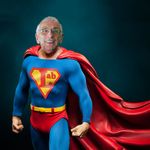- Home
- Photoshop ecosystem
- Discussions
- Re: Is it me or do Dodge and Burn seem to be named...
- Re: Is it me or do Dodge and Burn seem to be named...
Is it me or do Dodge and Burn seem to be named backwards? (new to all of this)
Copy link to clipboard
Copied
Hi, Just that....
In my camera, if I decrease the exposure, the photo gets darker. And as I am typing this I think it may be due to the fact that Dodging and Burning are done to a negative. Yes?
And I still have to ask a slightly different question: Are Dodging and Burning Backwards on digital photos because you have negated the negative ....which is a positive i think.
Are Dodging and Burning are now named for the net effect and not what they do to the digital data. Which would be backwards....
In PS Dodging Tool burns the digital and Burn Dodges it....I need an nap and I am only on Get to know Photoshop Video #4.
Explore related tutorials & articles
Copy link to clipboard
Copied
The Dodge tool and the Burn tool lighten or darken areas of the image. These tools are based on a traditional darkroom technique for regulating exposure on specific areas of a print. Photographers hold back light to lighten an area on the print (dodging) or increase the exposure to darken areas on a print (burning). The more you paint over an area with the Dodge or Burn tool, the lighter or darker it becomes.
Copy link to clipboard
Copied
Nancy's explanation above is right. Make it easy on yourself!
Just remember if you want to lighten an area, use the Dodge tool, if you want to darken it, use the Burn tool. I would recommend though that you decrease the exposure and do it gradually. Using the default will kill your image very quickly. I start with a 3-7% exposure and then increase it as I see the image changing as the result.
Copy link to clipboard
Copied
Unfortunately, both dodge and burn have one notable shortcoming: each dodge or burn dab is incorporated into the image. This makes it impractical or impossible to undo one or more of the changes minutes later, when other dabs have been added elsewhere in the image. Instead, you must then pile correction on correction rather than modifying the original image values. It is an inefficient and often destructive procedure.
There is a better way – one that puts the dodge and burn adjustments on a separate layer where they may be seen at any time and each adjusted or even eliminated, returning the area to its original value – all without corrupting the original image. And, you don’t even use the dodge and burn tools for the effects.
It takes far longer to describe than to do, so don’t be put off by the following detailed instructions.

1. Load a file to be retouched and add a blank layer by clicking on the Create a New Layer symbol at the bottom of the Layers panel to the left of the Trash. The blank layer is Layer 1.
2. Choose Edit > Fill and from the double-arrow options of the Use field, choose 50% gray. Then click OK. The image area will become gray overall.
3. Change the Blending mode in the Layers panel from Normal to Overlay. The Background image will return although you will be working on Layer 1.
4. Do not use the Dodge and Burn tools. Choose the Brush tool and adjust its size by tapping either of the square brackets to the right of the P key on the keyboard. To adjust the Brush hardness – a soft edge is best for this -- hold down the Shift key as you continually strike the left the square bracket. Set the Opacity of the Brush in the Options bar at about 10%.
5. Painting in white will Dodge (lighten) the area, Black will Burn (darken) the area. Strike the D key to place Black as the Foreground color and White as the Background color. To transpose them stroke the X key. Dab or stroke with the Black to slowly add density. To lighten an area, dab or stroke with White. Although the image will reflect the changes, they are being recorded on Layer1 and may be viewed by turning off the eye in the Background layer. Best of all: to undo any tone adjustment and return the area to its original value, simply return that area to 50% by cloning from an adjacent unretouched area in Layer 1.
Copy link to clipboard
Copied
You see here a slightly different doge and burn action: How To Edit like Sean Archer - YouTube . The video should start at the dodge and burn, but you may also look at the complete video. I think it is worth to get inspired from one or the other editing technique.


